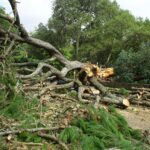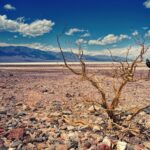Spring in Australia means yard cleanups, grass seeding, and inspecting the damaged trees as the result of a harsh winter. Not all trees can make it through winter, some get broken limbs, or the entire tree can get damaged. As such, spring is the best time to clean up winter’s damage and prepare your yard for the upcoming beautiful summer outdoors!
Trimming trees during spring helps to bring in new growth for many species. It’s much easier to trim a tree in spring as dead branches will not bear flowers, making it easy to spot such branches and get rid of them. We can also determine if the tree is beyond saving and call a tree care service for tree removal.
For trees that produce flowers in the summer, trimming early in the spring is highly recommended. It will increase the bud production in the other branches. However, if the trees bloom in spring, you will need to wait until their flowers begin to fade.
The primary concern is, how do you know if the tree is ready for trimming or removal?
Here is our tree trimming checklist for spring:
Inspect and Remove Dead or Damaged Branches
As mentioned above, spring makes it easier to identify the dead and decaying branches. As there won’t be many leaves, you can get a clear view and identify if the tree needs trimming. Due to harsh winters, some of the branches might be damaged. Inspect the tree properly to find out if the branches are damaged or dead. Such branches can damage the entire tree, so it’s better to remove them before the damage is too significant.

Know the Species of the Tree
If the tree has been planted recently, you can trim them in spring; it will help them to get a good structure. Usually, trees like maple, walnut and birch are trimmed in spring. Tree species like oak, sycamore, elm, and honey locust should not be trimmed till late fall, or else it will increase the risk of their growth.
So, not all trees benefit from trimming in spring. If you are not sure about the species of your trees, contact a professional tree service company or an arborist near you to get help.
Do It Safely
Trimming in spring can be done safely by not trimming more than 10% of the tree’s branches. Don’t try to trim too much you might put them at risk of disease. The main objective here is to remove dead branches to keep the tree healthy. You can also shape the tree and make it look beautiful.
Similar to tree trimming, you also need to figure out if a tree might need to be removed. Check if the tree is leaning too far and if you need to remove the tree before it falls and causes a severe problem. Also, scratch a small piece of bark off of a few twigs. If the layer underneath the bark is dry and brown, there might be some issues. Inspect the tree properly to find out if there are any other signs of a dead tree, like:
- Mushrooms growing at the base of the trunk
- Large scaffold branches or cavities in the trunk
- Chipped bark and cracks in the trunk
- Dead branches in the upper crown
- Fine twigs without living buds at the ends of branches
If you find out any of these symptoms, contact a professional arborist to handle them. Tree removal can be dangerous don’t try to do it on your own; let a professional inspect the tree and decide if the tree needs to be removed or not.





